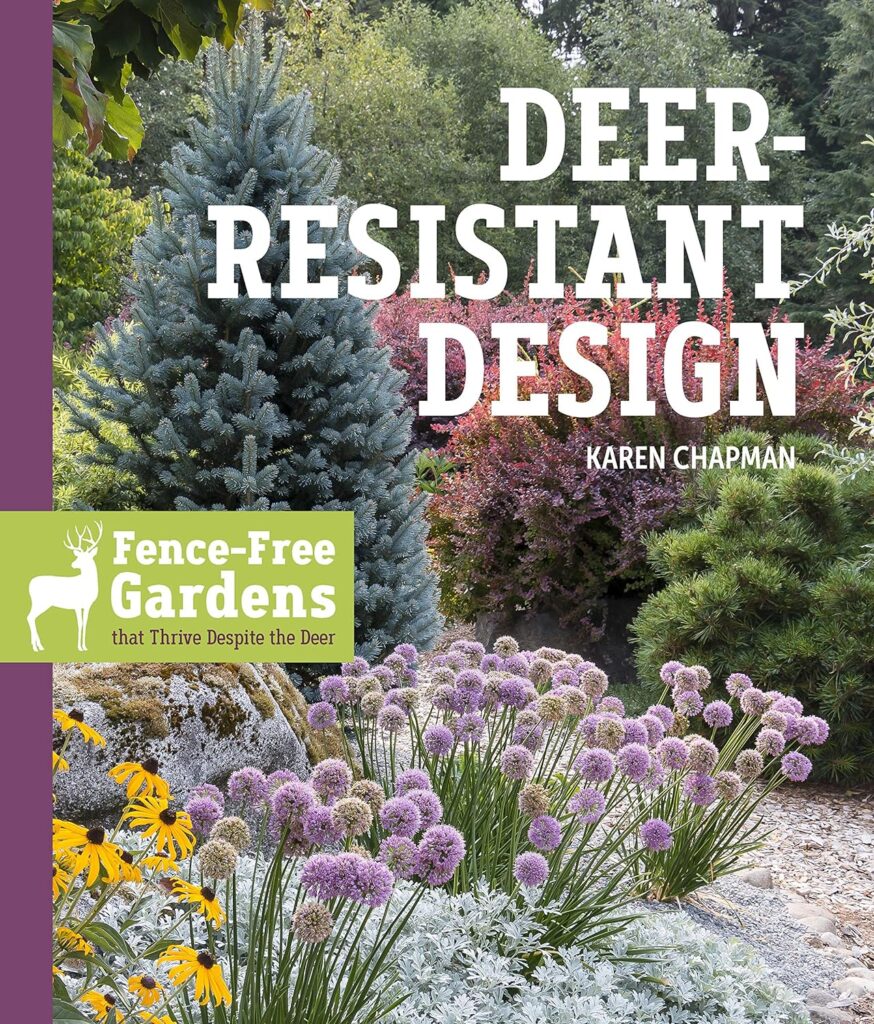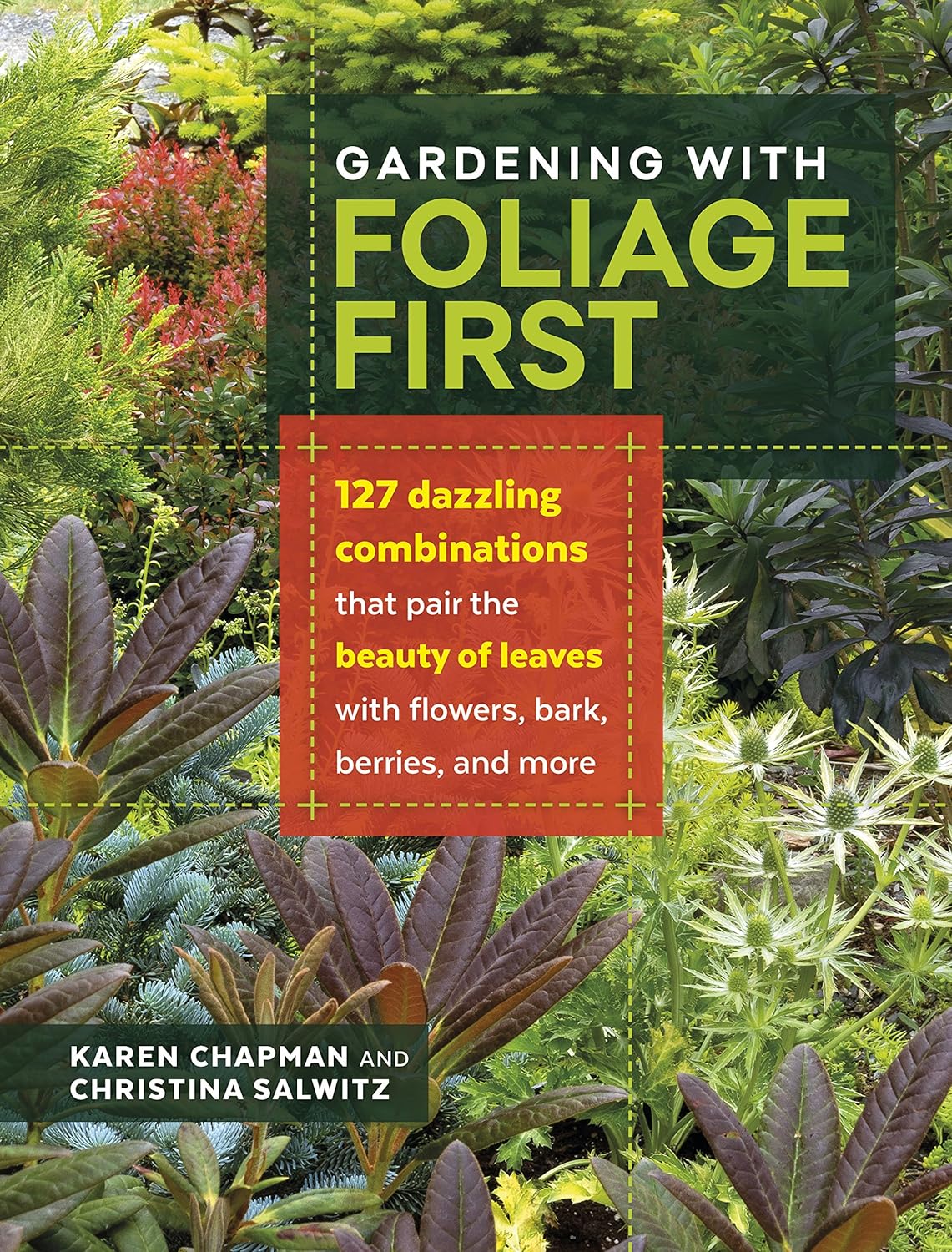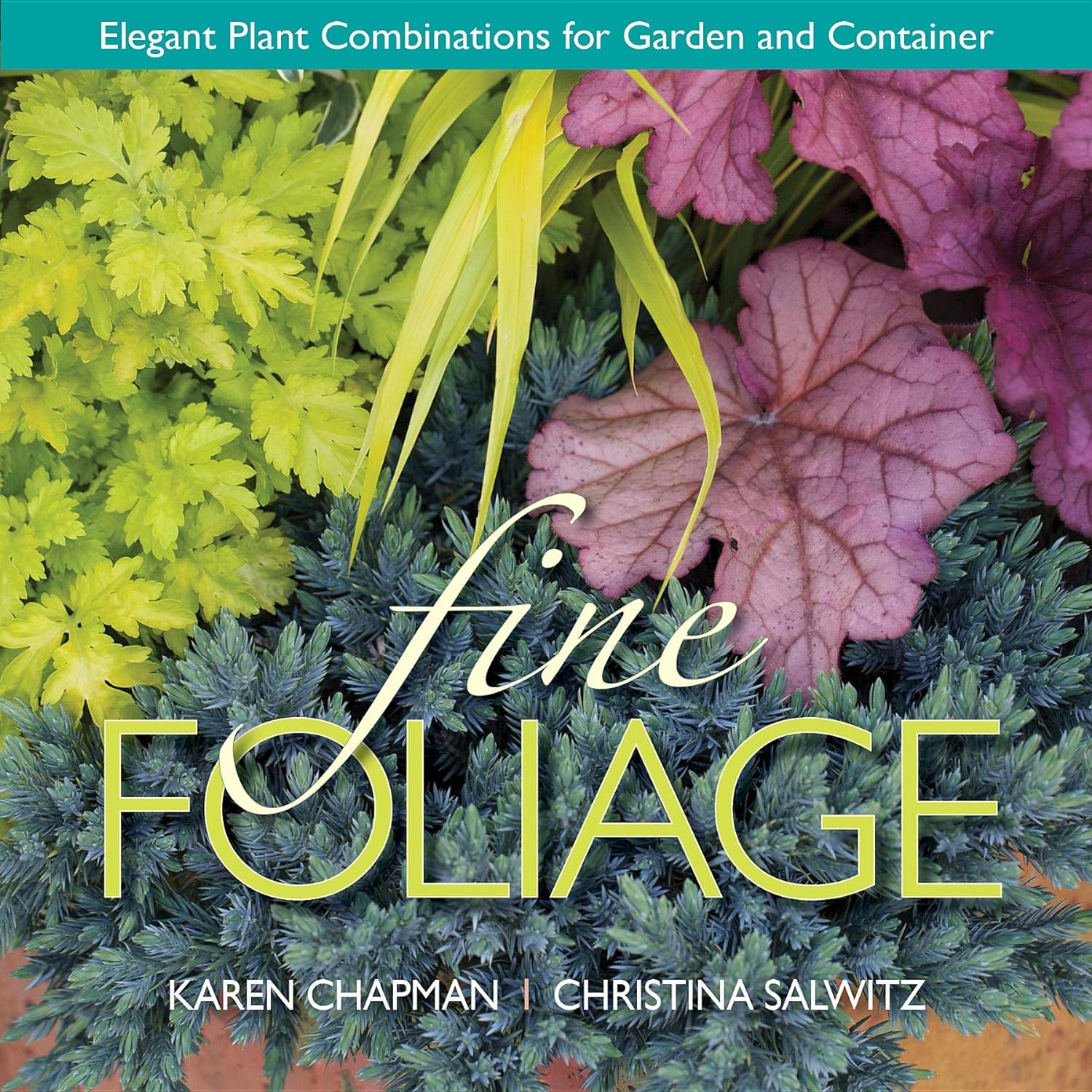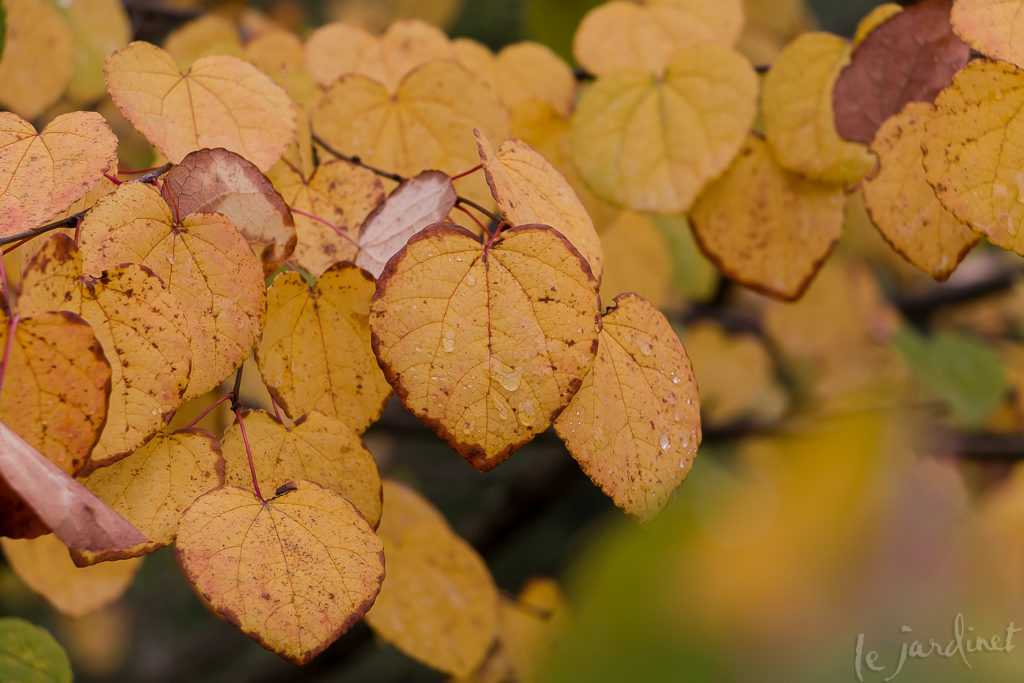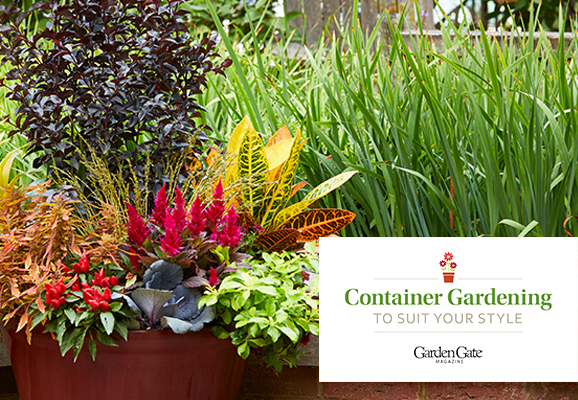Is the fall interest in your garden limited to the decaying foliage of summer perennials? That can often be the case without some advance planning. Here are a few ideas to help you create vignettes that truly celebrate the season rather than apologize for their demise.
Temper The Fire
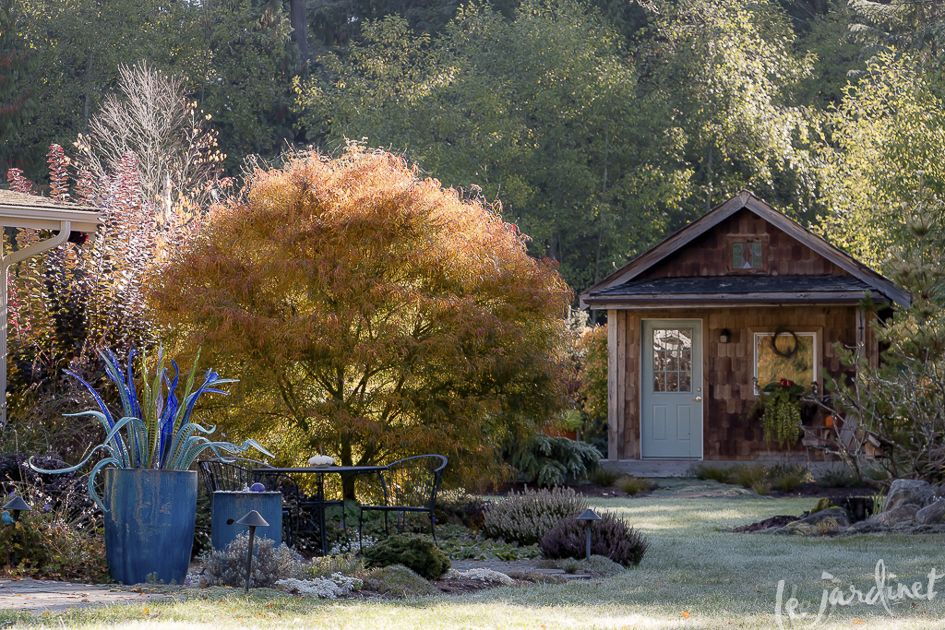
While the Koto-no-ito Japanese maple is clearly the fall star in this scene, the counterpoint of blue containers and glass art makes the vignette all the more memorable
The temptation is to focus on fiery shades of red, orange, and gold when planning fall combinations. In fact, tempering those flames with cooler tones of blue and silver can enhance the drama while also bringing smaller scenes into focus. For example, a blue-needled conifer or the felted, silver foliage of lamb’s ears (
Stachys byzantina) adjacent to warmer hues is all the more striking for the contrast.
Non-plant elements can also be used to achieve the same effect; in the front garden of my previous home, two deep turquoise containers were set against the golden backdrop of a
Koto-no-ito Japanese maple (
Acer palmatum ‘Koto-no-ito’), the unexpected combination creating a dramatic focal point.
The Importance of Texture
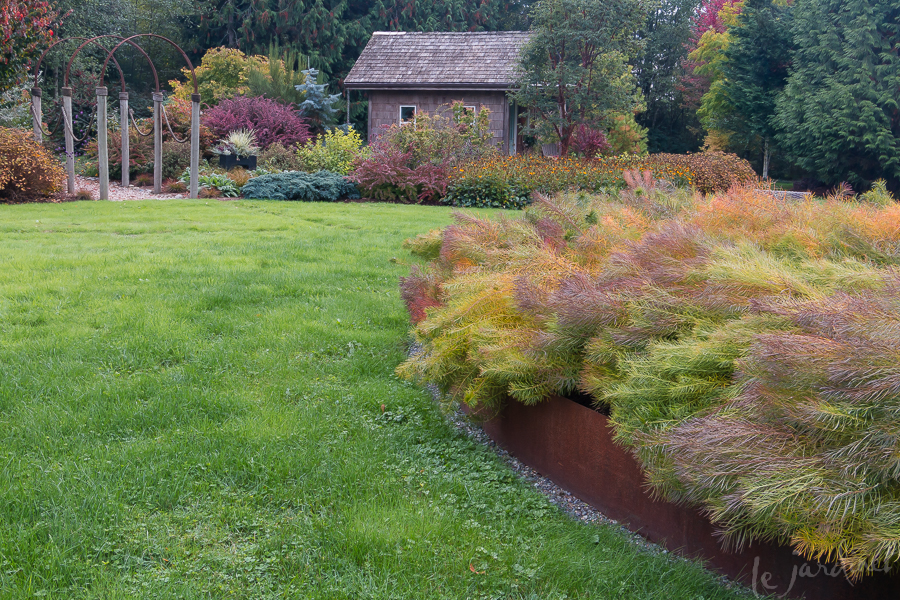
The feathery texture and kaleidoscopic color of Arkansas blue star framed and enhanced by rusted metal.
As color contrast is reduced, texture becomes increasingly important.
Arkansas blue star (
Amsonia hubrichtii) is my all-time favorite perennial. Drought tolerant, rabbit resistant, and deer-resistant, this tough plant emerges in spring with feathery green stems followed by pale blue, star-like flowers. The real excitement begins in fall, however, when it is transformed into a kaleidoscope of burgundy, purple, orange, and gold, each day seemingly more remarkable than the last. For the best effect Arkansas blue star needs to be planted in large drifts, so I designed a semicircular raised bed using rusted steel and filled it with over fifty of these autumnal stars. The late season display is outstanding, the finely textured foliage framed by the rich patina of the weathered steel while echoing the colors of the entire border seen in the distance.
Color Changing Evergreens

Finely textured orange hair sedge (Carex testacea) weaves between the bold, felted, silver leaves of Helene von Stein lambs ears.
Think fall displays are all about deciduous trees and shrubs?
There is an enormous misconception that “evergreen” plants means “always green” e.g. camellia, rhododendron, boxwood. Yawn… I love to incorporate evergreen plants that change color for seasonal interest. For example,
Gulf Stream heavenly bamboo that adds red tints added to its pallet of softer greens and orange during winter,
Blue Star juniper that takes on a burgundy hue,
Celtic Pride Siberian cypress which turns bronze,
variegated wintercreeper takes on pink tints,
Forever Goldie golden arborvitae changes from gold to orange in winter,
Louie pine and
Chief Joseph pine that both turn bright gold and
Rainbow drooping fetterbush which is a true chameleon transitioning from marbled green and cream to almost entirely deep red. In the photo above, the evergreen
orange hair sedge (Carex testacea) shows off its olive green blades, enhanced by vivid orange tips in late fall.
Fall/winter blooming heathers (
Calluna) are another category worth exploring, especially those whose foliage changes color. These are not your grandmas’ heathers! Forget the dark green leaves and mid-pink flowers that look boring at best or swallow the driveway at worst. Now you can choose varieties that have color-changing foliage as well as flowers. Some of my favorites include
Spring Torch,
Firefly,
Chocolate, and
Wickwar Flame. For containers I also seek out the
Bud Bloomer range. These are sterile, so instead of rapidly blooming and setting seed these keep the flowers (and therefore their color) for much longer making them perfect container candidates.
Aging Gracefully
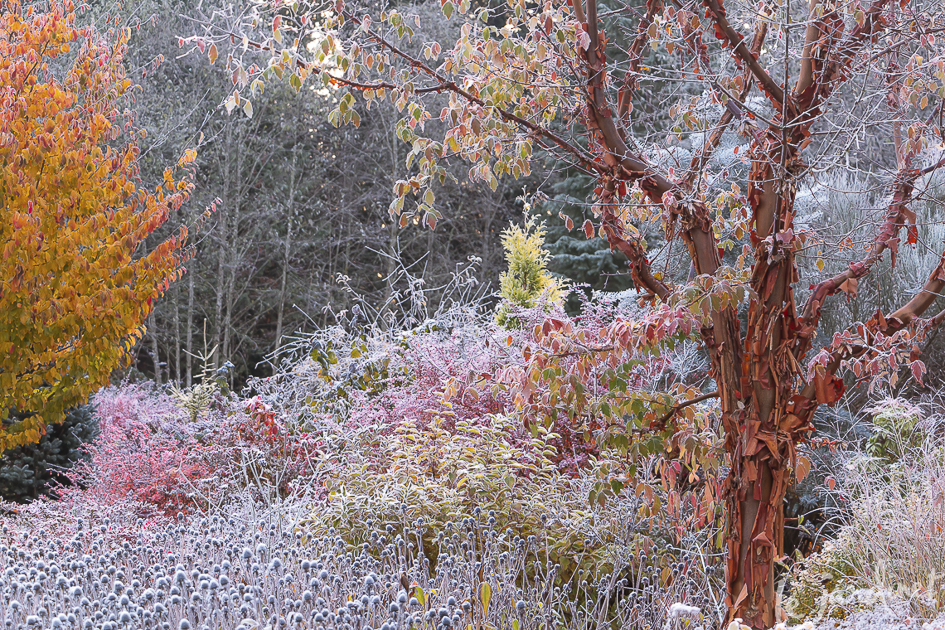
The peeling bark of a paperbark maple (Acer griseum) acts as a textural focal point within a frost-etched tapestry of seed heads and autumnal foliage.
Fall is also the time for seed heads to shine, adding depth to the garden and looking especially beautiful when etched with frost. I love watching chickadees and goldfinches forage on the spiky seed heads of
black eyed-Susan’s (
Rudbeckia fulgida var.
sullivantii 'Goldsturm') each fall. Although the golden petals of these popular summer daisies have long since fallen, the remaining architecture becomes part of a delicately woven tapestry beneath the peeling, mahogany-colored bark of a
paperbark maple (
Acer griseum).
What is your favorite fall scene that you look forward to every year?






